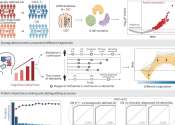Early life exposure to common chemical permanently disrupts gut microbiome, mouse study finds
Early life exposure to 'forever chemicals' in the environment permanently disrupts the gut microbiome in mice, contributing to the development of metabolic disease in later life, according to new research led by Penn State.
Aug 14, 2024
0
0









